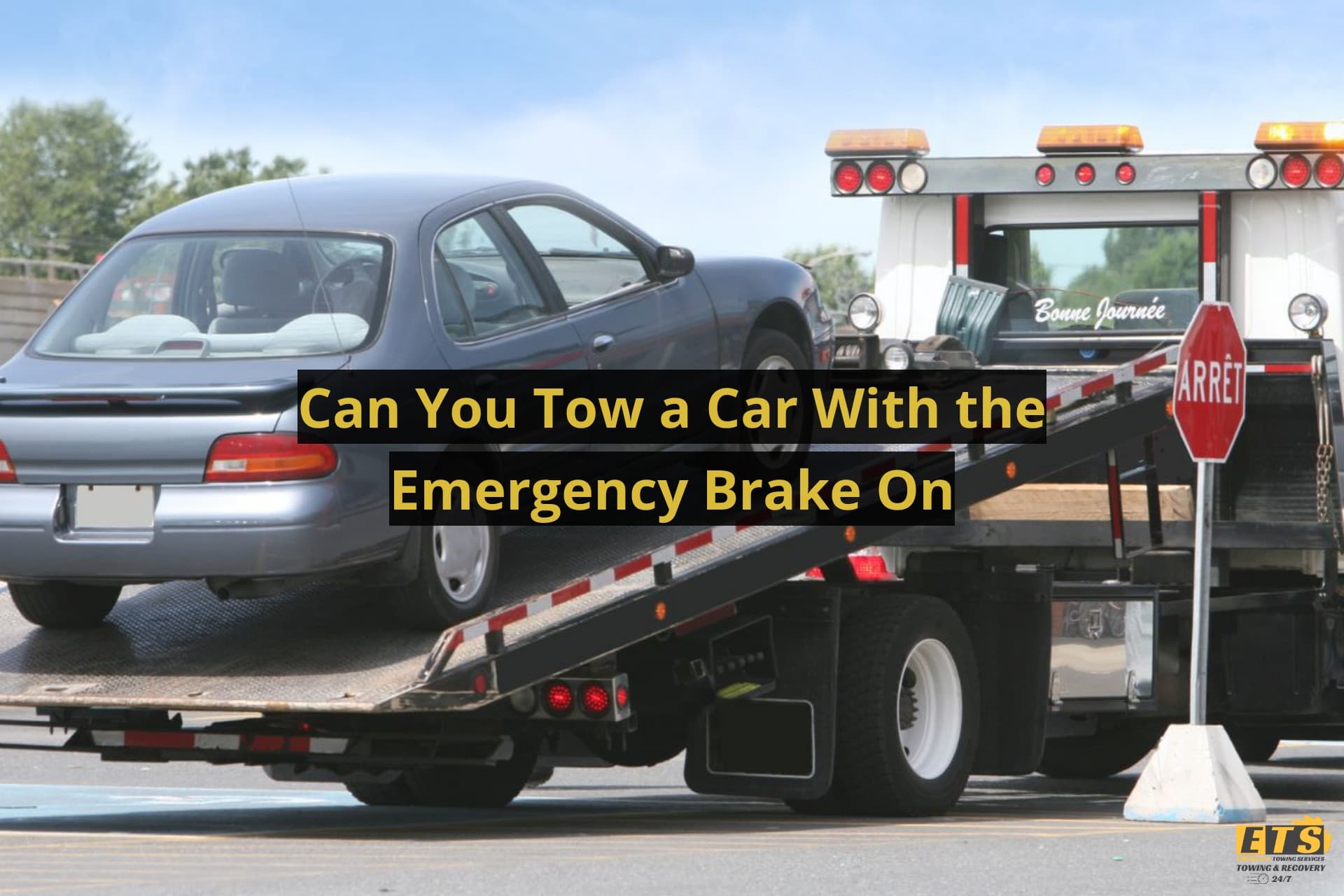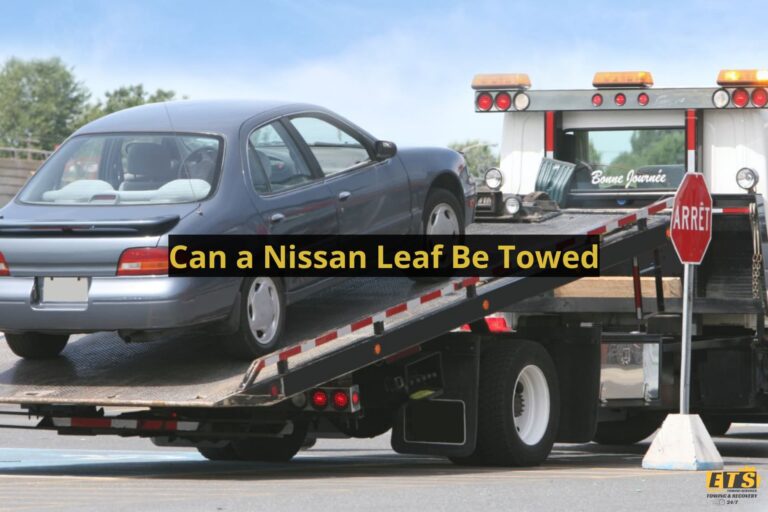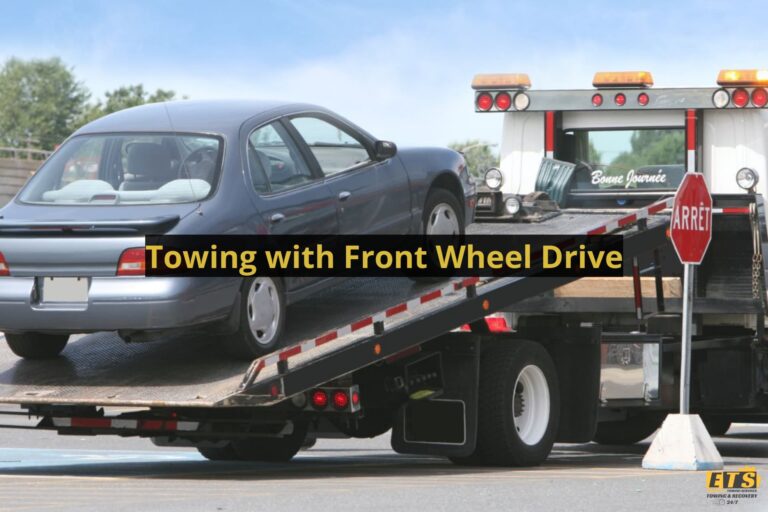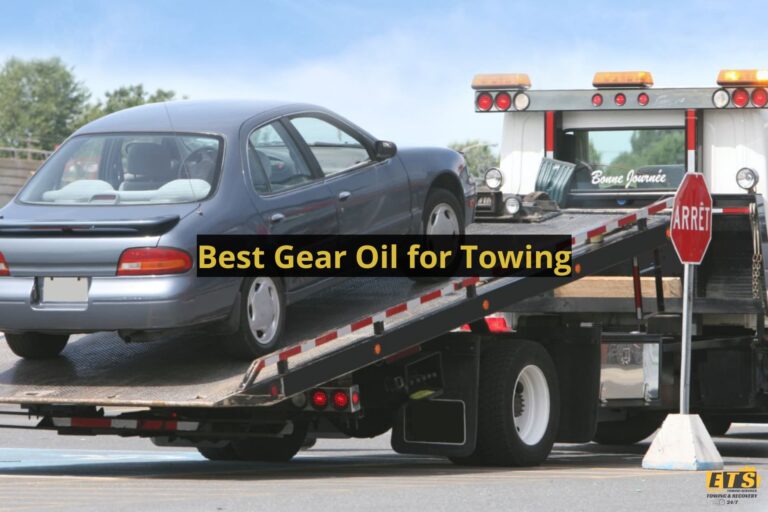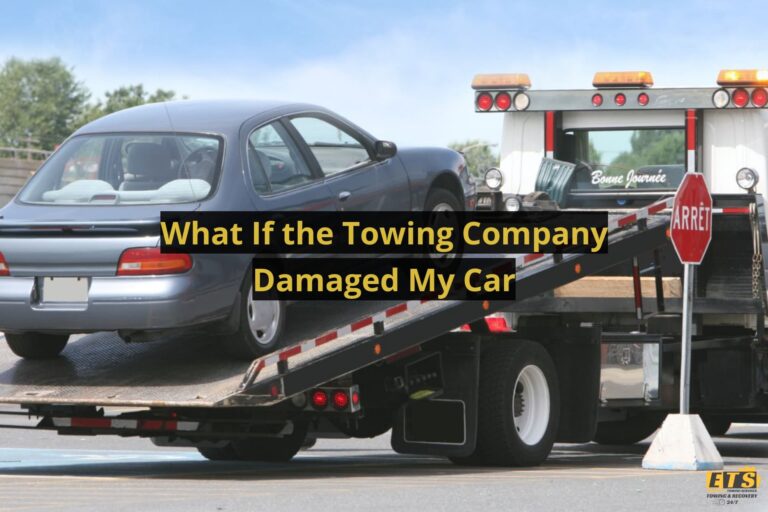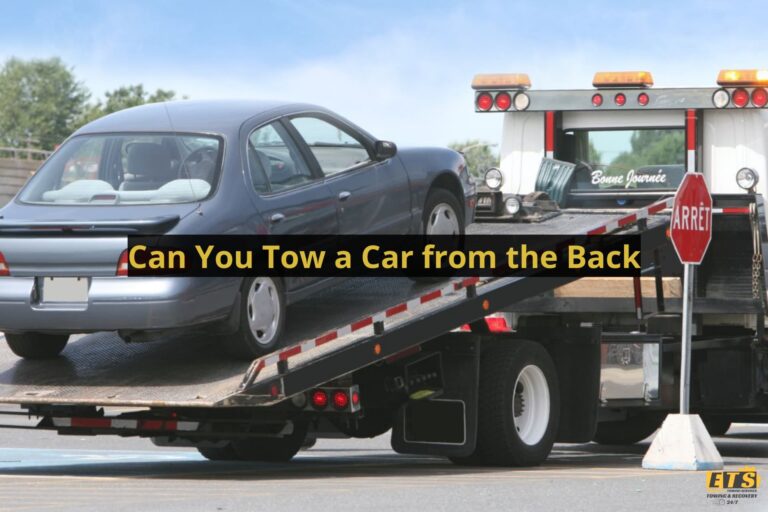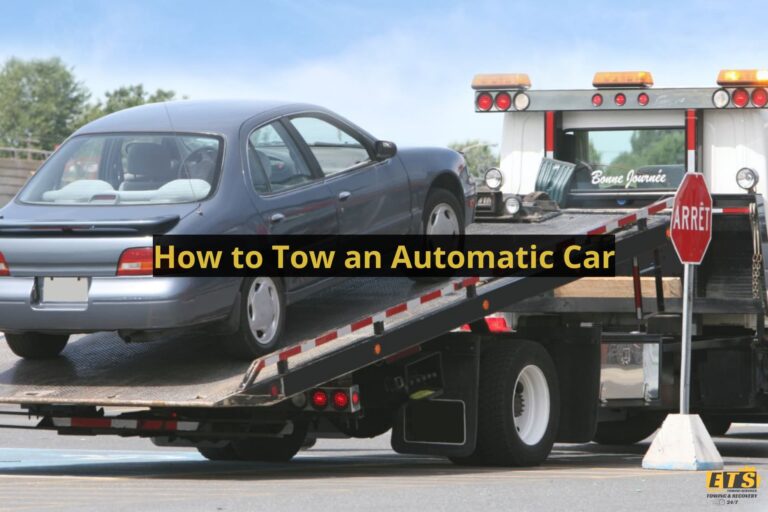Can You Tow A Car With The Emergency Brake On
The information presented in this article is provided for general informational purposes only, and may not reflect the current laws or legal developments. This article does not constitute legal advice, and the reader should not act on the information contained in this article without first seeking professional counsel. We make no guarantees about the accuracy, completeness, or adequacy of the information contained in this article. The reader assumes all risks and liabilities associated with any actions taken as a result of reading this article. To obtain legal advice on your specific matter, please contact a qualified legal professional.
Have you ever had to tow a car but forgot to release the emergency brake?
It’s a common mistake that can have serious consequences. Towing with the emergency brake on can damage your vehicle and create unsafe towing conditions.
Most people assume that if they’re only moving their car a short distance, it’s okay to leave the emergency brake engaged.
However, this couldn’t be further from the truth. In this article, we’ll take a closer look at whether or not you can safely tow a car with the emergency brake on, what kind of damage it can cause, and how to avoid making this costly mistake in the future.
Understanding Your Vehicle’s Emergency Brake System
You’re driving down the road and suddenly, you hear a loud noise coming from your car. You quickly pull over to assess the situation and realize that your brakes have failed. Thankfully, you remember that your vehicle is equipped with an emergency brake system. However, do you know how it works or if it’s even functioning properly?
Understanding emergency brake maintenance is crucial for every driver. The emergency brake system serves as a secondary braking mechanism in case of an emergency or when parked on a slope. It consists of cables connected to the rear wheels’ drum brakes or disc calipers, which are activated by pulling a lever or pushing a button.
Moreover, Emergency brake systems and winter weather go hand in hand. Cold temperatures can cause moisture buildup within the cables and lead to corrosion, making them less effective. Therefore, it’s essential to inspect and lubricate the parts regularly to ensure proper functioning during freezing conditions.
By understanding these basics about your vehicle’s emergency brake system, you’ll be better prepared for any unforeseen circumstances on the road.
The Dangers Of Towing With The Emergency Brake On
Towing a car with the emergency brake on can be extremely dangerous. Not only does it put unnecessary strain on your brakes, but it also increases the risk of an accident.
Emergency brake malfunctions are not uncommon when towing, and this is just one of many reasons why you should avoid using your emergency brake when towing.
There are alternatives to using the emergency brake for towing that are much safer. For example, you could use wheel chocks to prevent the vehicle from rolling while it’s being towed. This method is particularly useful if you need to park on a hill or incline.
Alternatively, you could invest in a trailer hitch or dolly which will allow you to tow your vehicle without putting any additional strain on your brakes.
It’s important to remember that towing can be dangerous if not done properly. By avoiding the use of your emergency brake and using alternative methods instead, you can ensure that both yourself and other road users stay safe while on the road.
So next time you need to tow a car, consider using one of these safer alternatives rather than relying solely on your emergency brake!
Types Of Damage That Can Result From Towing With The Emergency Brake On
Common misconceptions about towing a car with the emergency brake on often lead to costly damages. Many people assume that the emergency brake will prevent the car from rolling while being towed, but this is not entirely true. The emergency brake only locks the rear wheels of the vehicle, and if it’s left on during towing, it can cause serious damage.
One of the most common types of damage that can result from towing with the emergency brake on is overheating of the brakes. When you tow a car with the emergency brake engaged, even for short distances, it puts unnecessary strain on your braking system which causes heat buildup in your rotors and calipers. This excessive heat could eventually warp or crack them leading to expensive repairs.
Preventative measures should always be taken before towing any vehicle. If you have to tow a car, ensure that its parking brake is disengaged first. Also check whether all four wheels are free-rolling by gently pushing against each tire before starting to move it away. It’s also important to use appropriate equipment such as towing straps instead of chains since they can cause more harm than good when used incorrectly.
By understanding these common misconceptions and taking proper preventative measures, you can avoid causing further damage while towing a car with an emergency brake on. Always remember to consult professionals or seek advice if unsure about how best to go about safely moving your vehicle without putting undue stress on its components.
How To Determine If Your Emergency Brake Is On Before Towing
As you prepare to tow a car, it is crucial to ensure that the emergency brake is not engaged. This can save you from costly damages or accidents while driving.
One way to do this is by checking if your emergency brake is on before towing. To perform the checking procedure, first look at the dashboard of your vehicle for any warning lights indicating that the emergency brake is on. If there are no indications, turn off the engine and step out of your vehicle.
Walk around to the back of your car and check if each wheel rotates freely. If one or more wheels won’t budge or feel stiff when turned, then chances are high that the handbrake may be stuck in place.
Regular emergency brake maintenance can help prevent instances where it’s accidentally left on during towing. Make sure to engage and disengage your parking brakes regularly as part of your routine vehicle checks. You can also lubricate key components like cables and levers with silicone spray or lithium grease every few months to ensure they’re in good working condition.
By following these tips, you’ll know how to determine if your emergency brake is on before towing – thus avoiding potential damage to both cars involved in the process!
Proper Preparations For Towing Your Vehicle
Before towing your vehicle, it is essential to conduct a thorough pre-towing check. This will ensure that the car is in good condition for towing and prevent any damage during transport. Some of the things you should inspect include the tires, brakes, lights, fluids, and suspension.
Additionally, emergency brake maintenance plays a critical role in ensuring safe towing. Before hitching your car to a tow truck or another vehicle, make sure that the emergency brake is disengaged completely. Failure to do so can lead to severe damage to both vehicles and endanger everyone involved.
Lastly, it’s crucial to take all necessary precautions when towing your car. Always follow traffic rules and regulations while on the road and be vigilant at all times.
With proper preparation and attention to detail, you can safely tow your vehicle without encountering any issues along the way.
Steps To Take If You Accidentally Towed With The Emergency Brake On
After making all the necessary preparations for towing your vehicle, you may still encounter some unexpected situations on the road. One of these is accidentally towing with the emergency brake engaged. This can cause damage to both your car and tow vehicle, as well as compromise towing safety.
It’s important to understand how the emergency brake function works in order to prevent this from happening. The emergency brake or parking brake is designed to keep your car stationary when parked, not while being towed. When engaged during a tow, it causes unnecessary strain on both vehicles and can even result in overheated brakes or transmission failure.
If you find yourself accidentally towing with the emergency brake on, there are immediate steps that need to be taken.
First, stop immediately and turn off both vehicles.
Release the emergency brake and assess any damage that may have been caused.
It’s always better to err on the side of caution and call for roadside assistance rather than risking further damage by attempting to continue driving without proper inspection.
How To Release A Stuck Emergency Brake
With the emergency brake engaged, attempting to tow a car is like dragging an anchor through water. It’s not only difficult but also dangerous as it can cause your brakes to overheat and damage them. However, if you find yourself in this predicament, don’t panic! There are ways to release a stuck emergency brake.
Common causes of a stuck emergency brake include rusted cables or brake shoes that have become seized from lack of use. Prevention starts with regular maintenance checks on your vehicle, including testing the emergency brake periodically. If you notice any signs of wear or corrosion, address them immediately to prevent future issues.
Emergency brake maintenance tips include:
- keeping the handbrake clean and lubricated so it doesn’t stick.
- avoiding leaving the brake engaged for extended periods as it can lead to seizing up.
- considering using wheel chocks when parking on inclines to reduce stress on your brakes.
Releasing a stuck emergency brake requires patience and precision. First, try pulling the release lever while simultaneously lifting up on the handbrake slightly. If that doesn’t work, locate the adjustment nut under the center console or behind one of the rear wheels and loosen it until there’s slack in the cable. Finally, gently tap on each wheel with a rubber mallet until they turn freely before trying again to release the emergency brake.
Tips For Safe And Effective Towing Practices
After learning how to release a stuck emergency brake, it’s important to take the time to properly maintain it. Neglecting this crucial step can lead to serious problems in the future, including difficulty releasing the brake or even complete failure of the system.
Regular maintenance includes checking for worn out cables and replacing them as needed, ensuring that all components are lubricated and functioning smoothly, and adjusting the tension of the brake so that it engages properly without being too tight. By taking these steps regularly, you’ll not only keep your vehicle safe but also prolong its lifespan.
When it comes to towing a vehicle with an emergency brake on, there are several common mistakes that people make. One is failing to disengage the brake before attempting to tow, which can cause damage to both vehicles. Another mistake is using improper equipment or techniques when attaching the tow vehicle to the one being towed.
If you’re unsure about what you’re doing, it’s best to leave it up to professionals who have experience with safe and effective towing practices.
Properly maintaining your emergency brake and avoiding common towing mistakes will help ensure that you don’t run into any issues down the road. Don’t let neglect or ignorance put yourself or others at risk – take care of your braking system and always follow recommended guidelines for towing.
Conclusion
In conclusion, towing a car with the emergency brake on can lead to significant damage and safety hazards. It is essential to understand your vehicle’s emergency brake system and take proper precautions before towing.
Remember, it’s better to be safe than sorry when it comes to towing. Don’t let an oversight lead to costly repairs and potential accidents on the road.
Always double-check that your emergency brake is off before towing and follow proper procedures for safe and effective practices.
So, don’t put the cart before the horse by ignoring these crucial steps!

